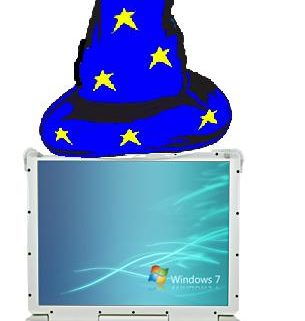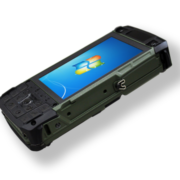 I used to work in healthcare, and like many people involved in that field, I became quite cynical about its practice. For one thing, modern medicine may be hi-tech, but people can treat it as if it was magic. Patients sometimes demand prescriptions from a doctor for medicines that they can get over the counter. The prescription is unnecessary, but it is “magic,” because it is from a doctor. Doctors have been known to take x-rays, not for diagnostic purposes, but because the “magic” image impresses patients and helps ensure compliance.
I used to work in healthcare, and like many people involved in that field, I became quite cynical about its practice. For one thing, modern medicine may be hi-tech, but people can treat it as if it was magic. Patients sometimes demand prescriptions from a doctor for medicines that they can get over the counter. The prescription is unnecessary, but it is “magic,” because it is from a doctor. Doctors have been known to take x-rays, not for diagnostic purposes, but because the “magic” image impresses patients and helps ensure compliance.
What about so-called “medical-grade” computers? Do doctors really need one? What exactly is a “medical-grade” computer, and is it good for anything else besides healthcare? Are they magic or hi-tech?
IEC 60601-1 (EN 60601-1)
In theory, I can stick a power supply into a coconut and legally call it a “medical-grade” computer. In spite of the healthcare field’s justifiably fierce reputation for hyper-regulation, there is no statutory agency that oversees the use of the term “medical-grade.” It’s a marketing term used by equipment providers.
However, for computers used in healthcare settings, there are standards that need to be met. The most important of these is IEC 60601-1 (EN 60601-1), which is actually a set of technical standards that ensure safety and effectiveness of medical electrical equipment.
One prominent aspect of compliance with IEC 60601-1 concerns the power supply. Most power supplies aren’t adequate to meet the requirements for leakage current and dialectical strength. So, replacing the conventional power supply with one that specifically complies is almost always mandatory. An alternative is to use an IEC 60601-1-compliant isolation transformer, which is better when there are multiple pieces of equipment that need powering. On the other hand, an IEC 60601-1 grade power supply leads to solutions that are smaller and lighter.
Other steps are necessary for compliance with IEC 60601-1:
- To defend against harmful voltages on communication lines, patient connections must be isolated from other secondary circuitry used for signal input/output ports. In fact all communication ports that are not part of the medical device should be sealed to prevent use.
- To prevent the patient from being accidently connected to an unsafe port, connectors on patient leads must configured in an uncommon fashion.
- To avoid confusion with commonly-used medical symbolism, the computer should not have yellow or red lights or switches.
- The computer should have the appropriate IP rating, so it can be washed with anti-microbial solutions.
As with rugged standards (i.e. MIL-STD 810/461), there are grades of compliance for IEC 60601-1. Independently certified by third parties is the preferred rating. Beware of terms, such as “built to” or “complies with.”
Anti-microbial surfaces/coatings
Some “medical-grade” computers have “anti-microbial coatings,” which presumably aid in medicine’s never-ending fight against the spread of infections. There are a number of ways for producing anti-microbial coatings. The method that utilizes copper has been approved by the EPA for use on computer keyboards for healthcare applications. There is research that copper coatings reduce transmission of pathogens, when they were used on “common-touch” areas, such as doorknobs.
One of the frustrating things about researching this article was the lack of information on specific anti-microbial coatings used in commercially available computers. Almost no manufacturer mentioned what kind of coating they used. Since research validated only certain kinds of coatings (and the EPA only approved certain kinds), this could be a significant lack of information. Also, I was unable to discover whether there is any good clinical evidence that anti-microbial coatings on computer keyboards reduce transmission of infections.
I did come across medical chat rooms in which computer anti-microbial coatings were discussed in the most contemptuous fashion. One person claimed that some companies used the term “anti-microbial coatings” to mean that the key board was “wipe-able” with sterile wipes. As with the term “medical-grade,” the implication was that this was an unregulated term.
So, should you look for computers with anti-microbial coatings? I imagine a parent would love to have them for a computer used by young children. However, at this point, I am unable to determine their effectiveness on keyboards. Also, there is always the temptation to avoid conventional methods of cleanliness (such as frequent washings with anti-microbial solutions), because the “magic” coating would protect the user.
Open-platform
Not all “medical-grade” computers are open platform, but there are huge advantages for the ones that are. An open platform computer can:
- Run proprietary software for specific medical devices
- Be encrypted, an increasingly important feature in the privacy-obsessed healthcare industry
- Utilize voice recognition software, because typing and doctors can be an ugly combination
Ruggedness
Most “medical-grade” computers are not rugged, but they should be. When one is caring for a patient, the last thing you want to do is worry about your computer.
Before my current career, I worked with patients who had epilepsy. If a patient has a seizure, the caregiver has to literally drop everything and grab them to prevent injury. A rugged computer that can survive a sudden drop would have been a nice thing to have. There are many critical situations like this in healthcare.
Furthermore, as VDC Research demonstrated, rugged computers that need to be replaced and repaired less often, actually have a lower Total Cost of Ownership (TCO) than non-rugged computers. For cost-conscious medical institutions, a rugged computer can save money.
There is some overlap between rugged and medical standards. For example, AMREL’s open-platform MRK8 has rubber pads on the bottom and fewer interface connections at its rear. These features have helped MRK8 to be independently certified for both MIL-STD 461E (Electromagnetic interference) and EN 60601-1 (patient safety).
A good computer is a good computer
So are “medical-grade” computers necessary or are they an example of magical thinking that can afflict healthcare?
There is nothing “magical” about an independently certified EN 60601-1computer. If you’re searching for a computer for medical research or patient care, you will definitely need one. If at all possible, make sure it’s rugged and open-platform.
If you looking for a computer for non-medical applications, then you don’t need one that is “medical-grade.” An exception would be AMREL MRK8, whose ruggedness makes it a good candidate for numerous applications. After all, a good computer is a good computer.






